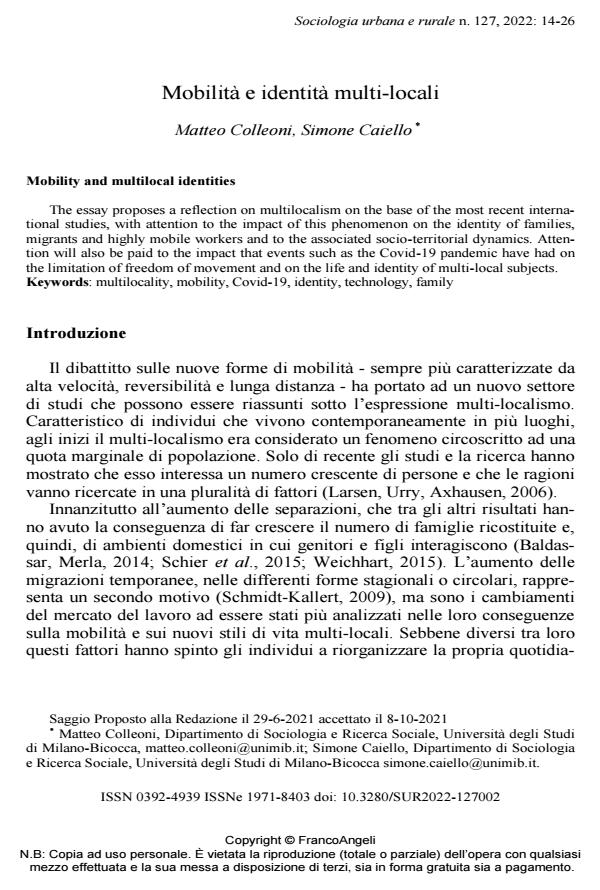Mobility and multilocal identities
Journal title SOCIOLOGIA URBANA E RURALE
Author/s Matteo Colleoni, Simone Caiello
Publishing Year 2022 Issue 2022/127
Language Italian Pages 13 P. 14-26 File size 252 KB
DOI 10.3280/SUR2022-127002
DOI is like a bar code for intellectual property: to have more infomation
click here
Below, you can see the article first page
If you want to buy this article in PDF format, you can do it, following the instructions to buy download credits

FrancoAngeli is member of Publishers International Linking Association, Inc (PILA), a not-for-profit association which run the CrossRef service enabling links to and from online scholarly content.
The essay proposes a reflection on multilocalism on the base of the most recent international studies, with attention to the impact of this phenomenon on the identity of families, migrants and highly mobile workers and to the associated socio-territorial dynamics. Attention will also be paid to the impact that events such as the Covid-19 pandemic have had on the limi-tation of freedom of movement and on the life and identity of multi-local subjects.
Keywords: multilocality, mobility, Covid-19, identity, technology, family
- The role of neighborhood quality in predicting place attachment: Results from ITA.LI, a newly established nationwide Italian panel survey Luca Bottini, in Cities 104632/2023 pp.104632
DOI: 10.1016/j.cities.2023.104632
Matteo Colleoni, Simone Caiello, Mobilità e identità multi-locali in "SOCIOLOGIA URBANA E RURALE" 127/2022, pp 14-26, DOI: 10.3280/SUR2022-127002